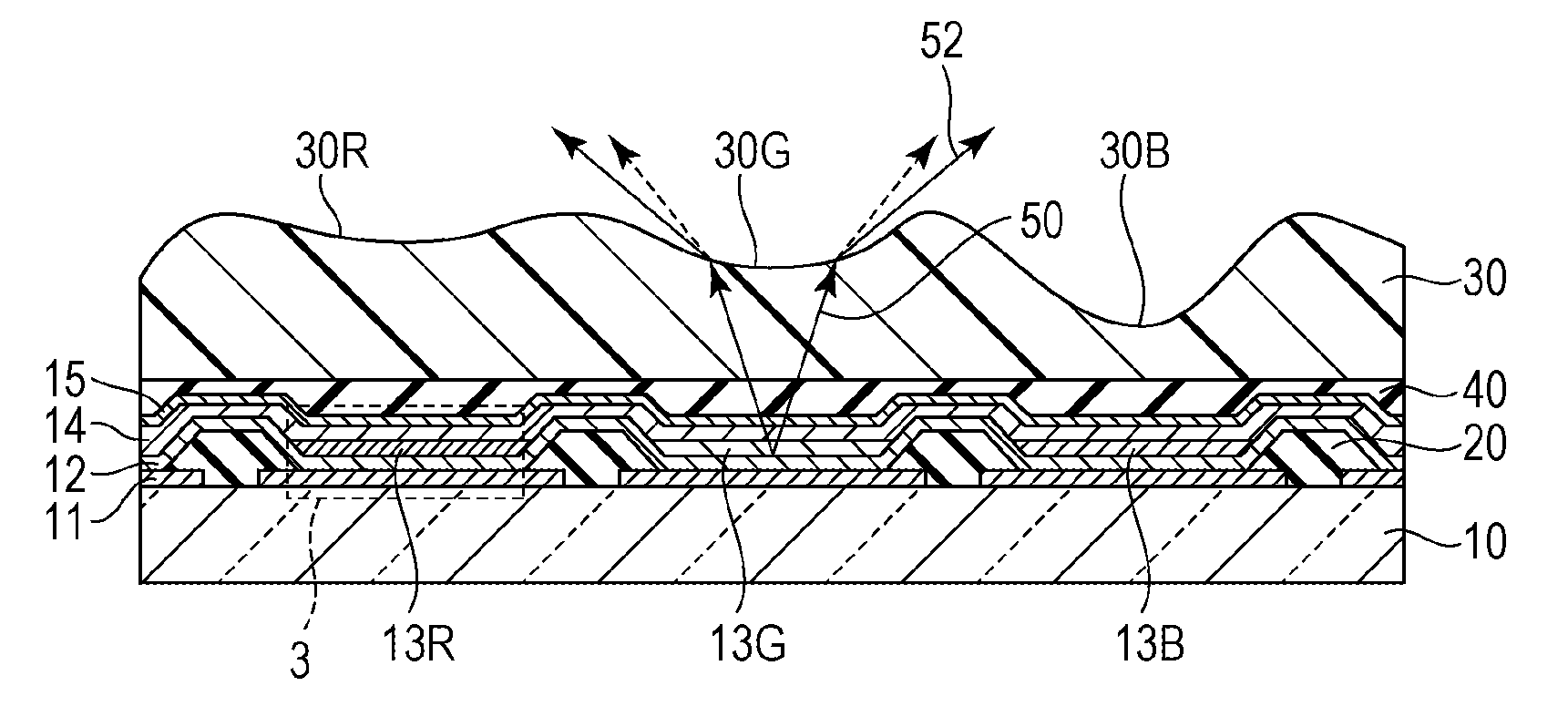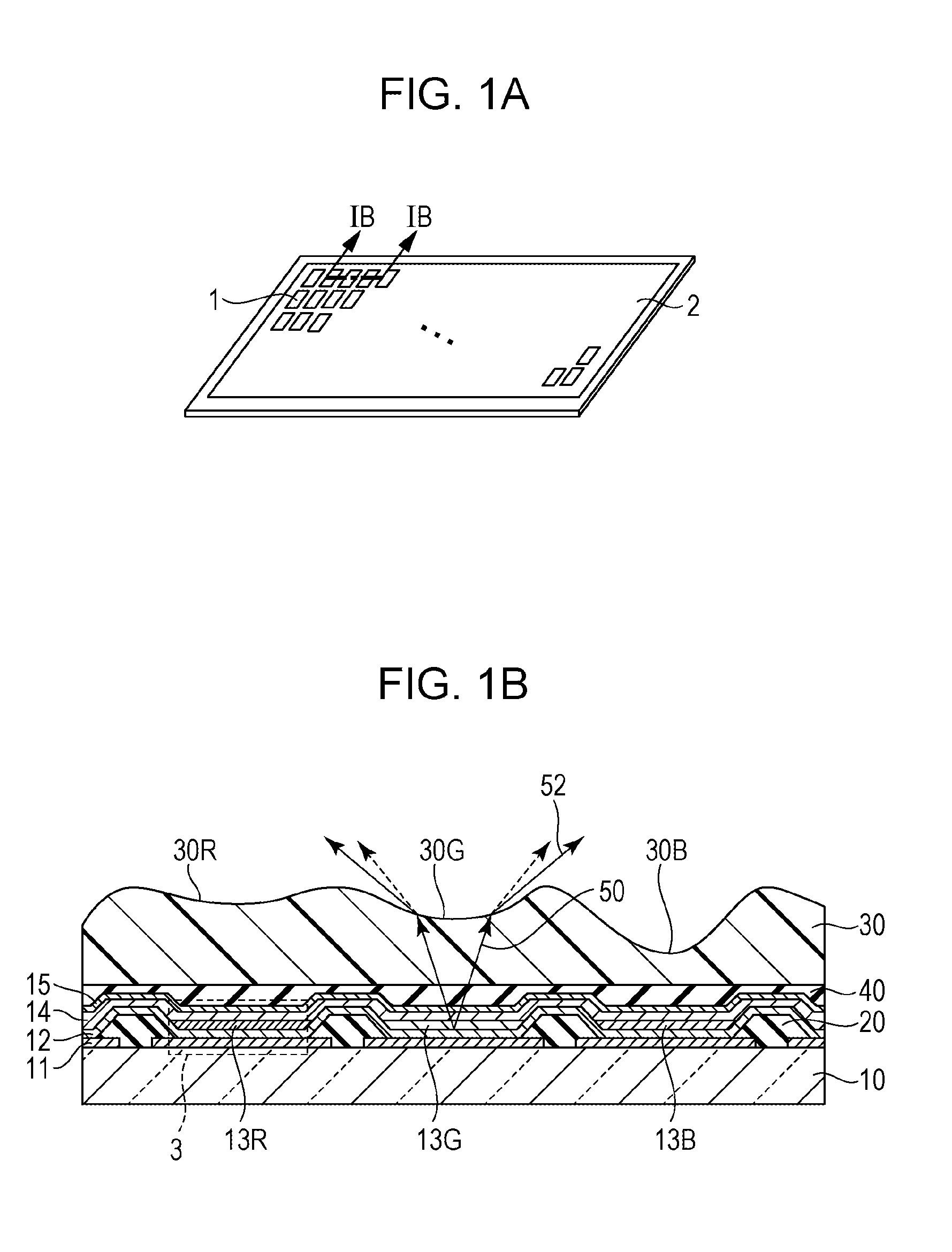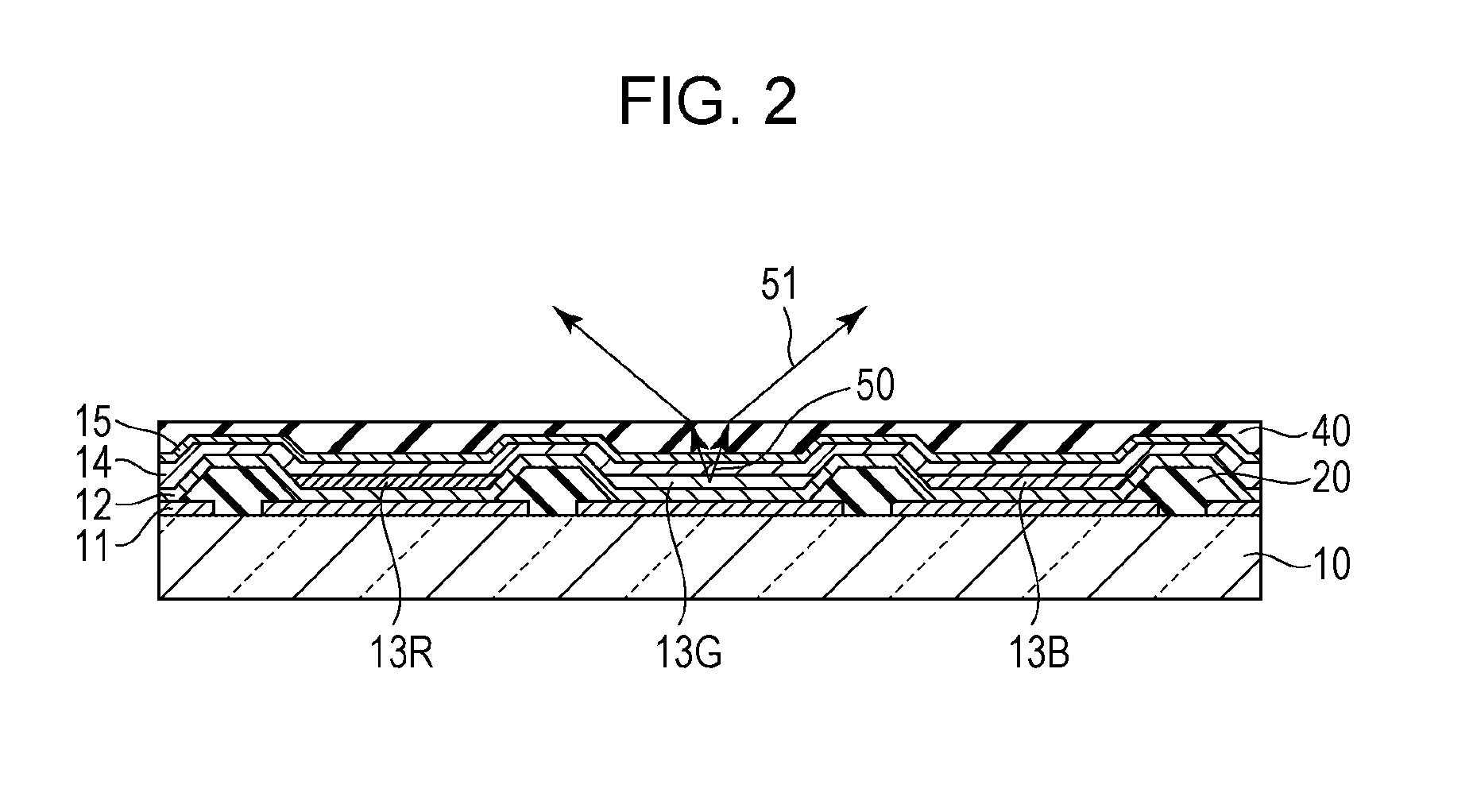Display device
a technology of a display device and a display screen, which is applied in the direction of thermoelectric device junction materials, semiconductor devices, electrical apparatus, etc., can solve the problems of difficult control of the film thickness of the organic compound layer constituting, difficult to form the organic el element, and different white color chromaticity, so as to reduce the brightness and reduce the brightness. small, the effect of large brightness reduction
- Summary
- Abstract
- Description
- Claims
- Application Information
AI Technical Summary
Benefits of technology
Problems solved by technology
Method used
Image
Examples
first embodiment
[0022]FIG. 1A is a perspective schematic view illustrating a display device according to a first embodiment of the invention. The display device of this embodiment has two or more pixels 1 each having an organic EL element. The two or more pixels 1 are disposed in the shape of a matrix and form a display region 2. The pixel refers to a region corresponding to a light emitting region of one light emitting element. In the display device of this embodiment, the light emitting element is an organic EL element and the display device of this embodiment is a display device in which an organic EL element of one color is disposed in each of the pixels 1. As the emission color of the organic EL elements, red, green, and blue can be considered and, in addition, yellow, cyan, and white may be acceptable. The color is not particularly limited insofar as at least two or more colors are employed. In the display device of this embodiment, two or more pixel units containing two or more pixels differ...
second embodiment
[0060]FIG. 5 is a partial sectional schematic view of a display device of this embodiment. The first embodiment relates to the display device in which the radius of curvature of the lenses is varied in the organic EL elements of the respective colors to thereby control the radiation characteristics, whereby the difference in the angular dependence of brightness of the organic EL elements of the respective colors is made small. In contrast, this embodiment relates to a display device in which the distance between a lens and a light emitting layer of each organic EL element is varied in the organic EL elements of the respective colors to thereby control the radiation characteristics, whereby the difference in the angular dependence of brightness of the organic EL elements of the respective colors is made small.
[0061]In general, the radiation characteristics of the lens become small with an increase in the distance between the concave lens and the light emitting point (or light emittin...
example 1
[0074]This Example describes an example in which the difference of the angular dependence of brightness of organic EL elements using lenses different in the radius of curvature will be described with reference to FIGS. 4A to 4E.
[0075]First, a low-temperature polysilicon TFT was formed on a glass substrate, and then an interlayer insulation film containing nitride silicon and a planarization film containing acrylic resin were formed thereon in this order, thereby creating a substrate 10 illustrated in FIG. 4A. An ITO film / AlNd film was formed on the substrate 10 by sputtering with a thickness of 38 nm / 100 nm. Subsequently, the ITO film / AlNd film was patterned for every pixel to form first electrodes 11.
[0076]Acrylic resin was applied onto the first electrodes 11 by spin coating. The acrylic resin was patterned by lithography in such a manner that openings (the openings correspond to the pixels) were formed in portions where the first electrodes 11 were formed to thereby form an insul...
PUM
 Login to View More
Login to View More Abstract
Description
Claims
Application Information
 Login to View More
Login to View More - R&D
- Intellectual Property
- Life Sciences
- Materials
- Tech Scout
- Unparalleled Data Quality
- Higher Quality Content
- 60% Fewer Hallucinations
Browse by: Latest US Patents, China's latest patents, Technical Efficacy Thesaurus, Application Domain, Technology Topic, Popular Technical Reports.
© 2025 PatSnap. All rights reserved.Legal|Privacy policy|Modern Slavery Act Transparency Statement|Sitemap|About US| Contact US: help@patsnap.com



